People don’t like to admit if they are prejudiced, whether it’s against blacks or gays, women or Jews, or the elderly.
But researchers of social psychology have tests that can measure conscious or unconscious bias, and one of them is the “Implicit Association Test.” Developed in 1998, the test asks implicit questions — as opposed to explicit — to expose bias on socially sensitive topics. Worldwide, various IAT versions have been used in more than 1,000 studies over the years. The test’s most controversial finding has been that 70 percent of people tested for their racial attitudes unconsciously preferred white people to black people, but only 20 percent reported such an attitude.
What researchers hadn’t determined up until now is how reliable IATs have been at predicting behavior related to these taboo prejudices. Now they know.
 In the first study of its kind, publishing in the “Journal of Personality and Social Psychology,” an SMU researcher and others validated the IAT’s ability to predict behavior around socially sensitive topics, particularly race. The study aggregated the findings of 184 different IAT research studies, which tested 14,900 subjects, and found the predictive validity of self-report measures was remarkably low, while incremental validity of IAT measures — how much it can predict behavior over-and-above explicit measures — was relatively high.
In the first study of its kind, publishing in the “Journal of Personality and Social Psychology,” an SMU researcher and others validated the IAT’s ability to predict behavior around socially sensitive topics, particularly race. The study aggregated the findings of 184 different IAT research studies, which tested 14,900 subjects, and found the predictive validity of self-report measures was remarkably low, while incremental validity of IAT measures — how much it can predict behavior over-and-above explicit measures — was relatively high.
“Within behavioral research, we humans have attitudes and feelings and beliefs that we’re not willing or able to report on, or understand ourselves,” says T. Andrew Poehlman, one of the study’s four authors and an assistant professor at SMU. “This research shows that when you aggregate across many studies, it seems that non-conscious attitudes influence the way people behave in a systematic and important way. When you have attitude domains in which people are unable to accurately report on how they feel, then using a test like this can get around some of the touchier attitudes some subjects may have.”
Confirming the IAT’s predictive validity has ramifications for emerging interest in administering the IAT for applications in law, policy and business.
For example, one finding from IAT research is that most Americans associate men — more than women — with math. But most people won’t self-report that belief, either because they consider it unacceptable or they’re unaware of their bias. Also, IAT research has shown a majority of people prefer young people to old people, and white people to black people.
IAT presents concepts to subjects via computer and asks them to categorize them. Measuring the speed at which subjects respond, enables researchers to assess attitudes.
“The reality is, we hold a lot of these undesirable attitudes whether we like them or not,” says Poehlman in SMU’s Cox School of Business. “Since it’s impossible for people to empty the contents of their mental container onto the table — because most of what we’ve got in our brain is unconscious — the IAT has proven to be a good measure of attitudes, and we can use it as a predictor of how people will behave.”
Lead author of the study was Anthony Greenwald, psychology professor and adjunct professor of marketing and international business at the University of Washington. Besides Poehlman, other authors are Eric Uhlmann, Northwestern University; and Mahzarin Banaji, Harvard University.
Greenwald created the IAT, then Banaji and Brian Nosek, a University of Virginia associate professor of psychology, developed it further.
More than 10 million versions of the test have been completed via the Internet site https://implicit.harvard.edu, as a self-administer demonstration, according to the University of Washington.
Anthony Greenwald
“In situations where people can easily report on their preferences because they are either willing or able, then explicit measures do a fine job,” Poehlman says. “But when we get to sticky things that people may not know they think, such as emerging preferences, racism, etc., or things that they know they think, but just don’t want to say, such as ‘women are bad at math,’ then the IAT is pretty useful.”
Studies reviewed for the analysis covered: black-white interracial behavior, non-racial intergroup behavior, gender and sexual orientation, consumer preference, political preference, personality differences, alcohol and drug use, close relationships and clinical phenomena.
Findings showed that:
- Across all nine areas, measures of the test were useful in predicting social behavior.
- For consumer and political preferences, both measures effectively predicted behavior, but self-reporting had significantly greater predictive value.
- For samples with criterion measures involving black-white interracial behavior, predictive validity of IAT measures significantly exceeded that of self-report measures.
“The Implicit Association Test is controversial because many people believe that racial bias is largely a thing of the past,” Greenwald says.”The test’s finding of a widespread automatic form of race preference violates people’s image of tolerance and is hard for them to accept. When you are unaware of attitudes or stereotypes, they can unintentionally affect your behavior. Awareness can help to overcome this unwanted influence.” — Margaret Allen (University of Washington contributed to this report)
Related links:
Online: Take the Implicit Association Test
“Journal of Personality” draft in press: Predictive validity of the IAT
UW News: Study supports validity of test that indicates widespread unconscious bias
Sciencewatch.com: Anthony Greenwald talks about the Implicit Association Test
Anthony Greenwald
SMU Cox School of Business

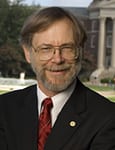
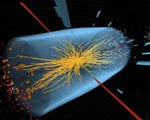 Observed! SMU’s LHC physicists confirm Higgs ‘God particle’
Observed! SMU’s LHC physicists confirm Higgs ‘God particle’ DOE Award: advancing SMU’s link to the God particle
DOE Award: advancing SMU’s link to the God particle Ancient tree-ring records from southwest U.S. suggest today’s megafires are truly unusual
Ancient tree-ring records from southwest U.S. suggest today’s megafires are truly unusual Human diabetes has new research tool: Overfed fruit flies that develop insulin resistance
Human diabetes has new research tool: Overfed fruit flies that develop insulin resistance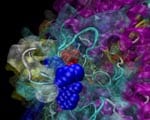 Modeling the human protein in search of cancer treatment: SMU Researcher Q&A
Modeling the human protein in search of cancer treatment: SMU Researcher Q&A Middle school boys who are reluctant readers value reading more after using e-readers
Middle school boys who are reluctant readers value reading more after using e-readers Dark matter search may turn up evidence of WIMPS: SMU Researcher Q&A
Dark matter search may turn up evidence of WIMPS: SMU Researcher Q&A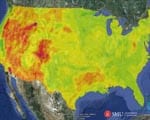 Unconventional geothermal techniques a potential game changer for U.S. energy policy
Unconventional geothermal techniques a potential game changer for U.S. energy policy The remarkable 60-year-career of internationally recognized field archaeologist Fred Wendorf, SMU Henderson-Morrison Professor of Prehistory Emeritus, is the subject of an interview with
The remarkable 60-year-career of internationally recognized field archaeologist Fred Wendorf, SMU Henderson-Morrison Professor of Prehistory Emeritus, is the subject of an interview with 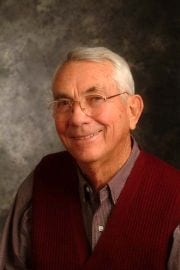 Dr. Fred Wendorf came of age and began his career during a formative period in American archaeology. But after leaving his permanent mark on the development of archaeology in the American Southwest and the United States, he essentially founded the study of the prehistoric eastern Sahara, beginning with the Aswan Dam Project in the Nile River Valley.
Dr. Fred Wendorf came of age and began his career during a formative period in American archaeology. But after leaving his permanent mark on the development of archaeology in the American Southwest and the United States, he essentially founded the study of the prehistoric eastern Sahara, beginning with the Aswan Dam Project in the Nile River Valley. Dr. Richard Pettigrew of ALI interviewed Dr. Wendorf for
Dr. Richard Pettigrew of ALI interviewed Dr. Wendorf for 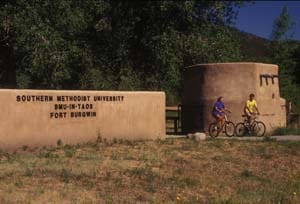 The goal of the Taos Collaborative Archaeology Program (TCAP) is to unite the strengths of SMU’s community-based archaeology and Mercyhurst’s excavation, documentation and analytical protocols to offer students an unparalleled archaeological training experience.
The goal of the Taos Collaborative Archaeology Program (TCAP) is to unite the strengths of SMU’s community-based archaeology and Mercyhurst’s excavation, documentation and analytical protocols to offer students an unparalleled archaeological training experience.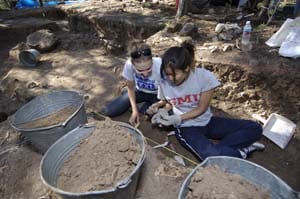 The first TCAP session was June 1 through July 15, and joined 12 students from SMU with 16 from Mercyhurst. SMU’s TCAP director is
The first TCAP session was June 1 through July 15, and joined 12 students from SMU with 16 from Mercyhurst. SMU’s TCAP director is  The Mercyhurst group is supplying a new remote sensing device known as a gladiometer that works in tandem with computer software to detect features and structures buried at shallow depths, to generate subsurface maps and to better target excavation efforts.
The Mercyhurst group is supplying a new remote sensing device known as a gladiometer that works in tandem with computer software to detect features and structures buried at shallow depths, to generate subsurface maps and to better target excavation efforts. SMU-in-Taos has offered summer education programs tailored to the region’s unique resources since 1973, but the rustic campus dormitories were impractical for use during colder weather. New construction, recent renovations to housing and technological improvements provided through a $4 million lead gift from former Texas Gov. William P. Clements and his wife, Rita, will allow SMU students to take a full semester of classes for the first time this fall.
SMU-in-Taos has offered summer education programs tailored to the region’s unique resources since 1973, but the rustic campus dormitories were impractical for use during colder weather. New construction, recent renovations to housing and technological improvements provided through a $4 million lead gift from former Texas Gov. William P. Clements and his wife, Rita, will allow SMU students to take a full semester of classes for the first time this fall.